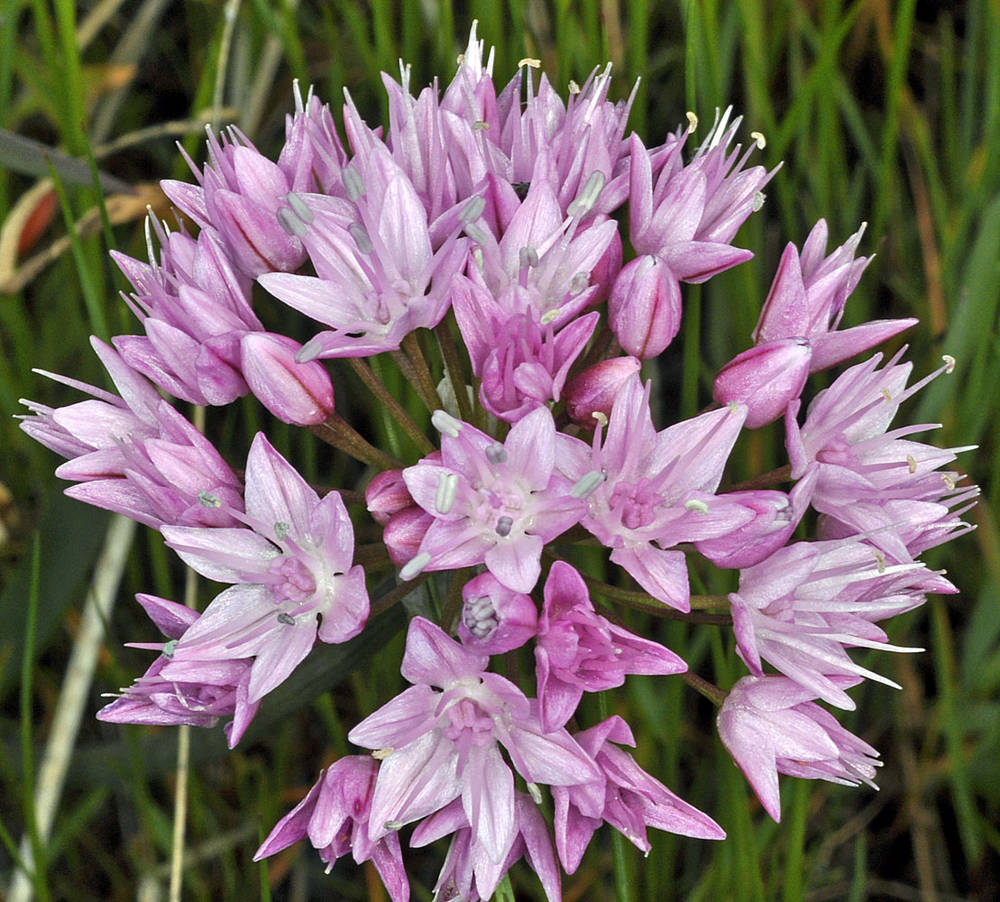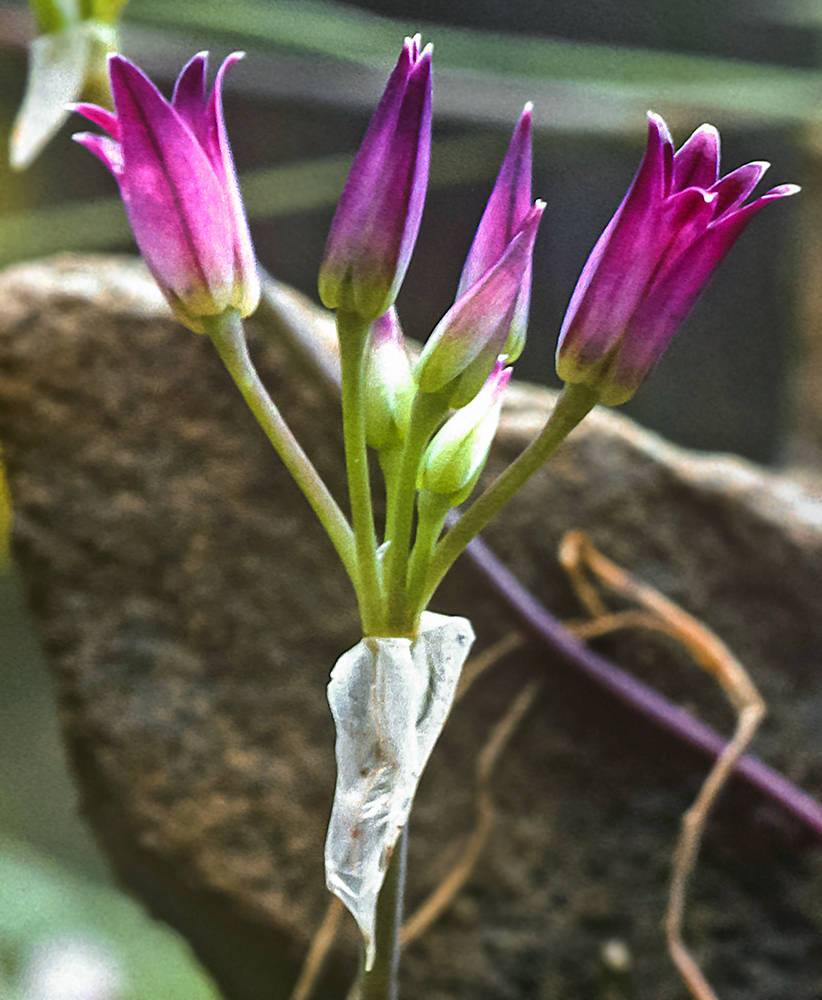Allium nevii
Allium bolanderi
Nevius' onion
Bolander's onion
1–5+; ovoid;
outer coats enclosing 1 or more bulbs, membranous; more or less reticulate;
cells quadrate to polygonal, vertically oblong; without fibers.
1–6+, not basally clustered; new bulbs borne terminally on rhizomes;
rhizomes 1–3; slender; less than 2 cm long including renewal bulb, parent bulbs disappearing by anthesis except for still-functional roots and bulb coat, oblique-ovoid to more or less oblong;
outer coats not enclosing bulbs; more or less obscurely reticulate, membranous; reticulum delicate;
cells transversely elongate; V-shaped or more or less wavy, forming obscure herringbone pattern; without fibers.
usually persistent, withering from tip at anthesis, 2;
blades solid; flat or more or less channeled, falcate, 12–25 cm × 2–3 mm.
persistent, withering from tip at anthesis, 2–3;
blades solid, subterete to more or less channeled, 9–30 cm × 1–2 mm.
persistent, 1–3; erect; solid; terete or somewhat flattened, 2-edged, not expanded proximal to inflorescence, 15–30 cm × 1–3 mm.
persistent; solitary; erect; solid; terete, 10–35 cm × 1–3 mm.
persistent; erect; compact, 10–30-flowered, hemispheric;
pedicels 8–12 mm;
spathe bracts 2.
persistent; erect; compact to loose, 10–20-flowered, hemispheric;
pedicels 10–20 mm;
spathe bracts 2.
6–8 mm;
tepals spreading, lanceolate; more or less equal; rose-colored;
margins entire;
apex acuminate;
stamens more or less equaling tepals, or exserted;
ovary distinctly crested with 6 low processes;
stigma unlobed.
7–14 mm;
tepals erect, narrowly lanceolate to lance-ovate; more or less equal; reddish purple, rarely white;
margins finely denticulate (inner tepals more prominently so);
apex acute to obtuse, becoming involute at tip and appearing acuminate;
stamens included;
ovary obscurely crested with 3 minute processes;
stigma scarcely thickened, obscurely 3-lobed.
=14.
=14.
Allium nevii
Allium bolanderi
Wet meadows and along streams, in rocky clay soils, seasonally moist scablands. Flowering Apr–Jun. 0–1200 m. Col, ECas. WA. Native.
Clay soils, usually on serpentine, dry openings and savanna.
2 varieties. The varieties of A. bolanderi are extremely difficult to distinguish in the absence of bulb material. Although great care must be taken to obtain good bulbs whenever collecting any Allium taxon, it is especially critical within this species.
Nick Otting, Richard Brainerd, Barbara Wilson
Nick Otting, Richard Brainerd, Barbara Wilson





